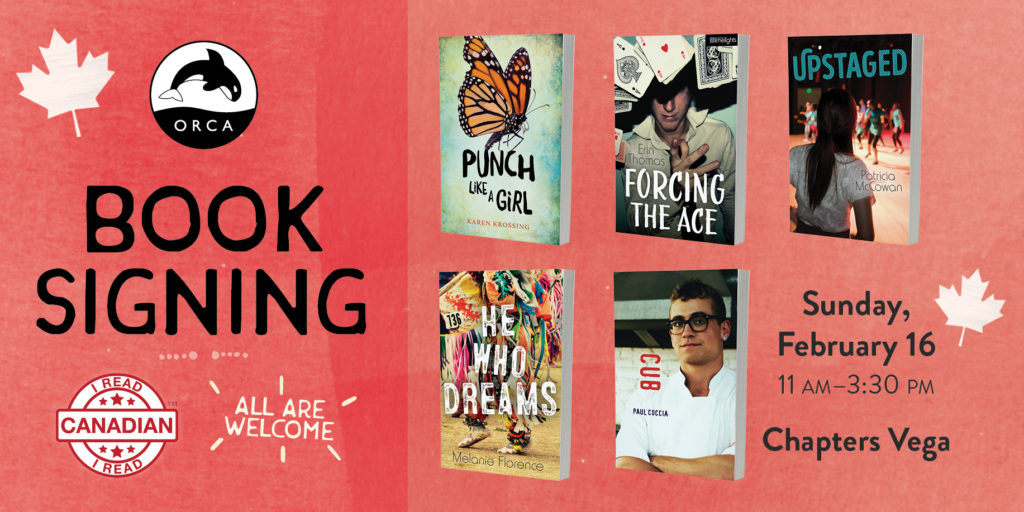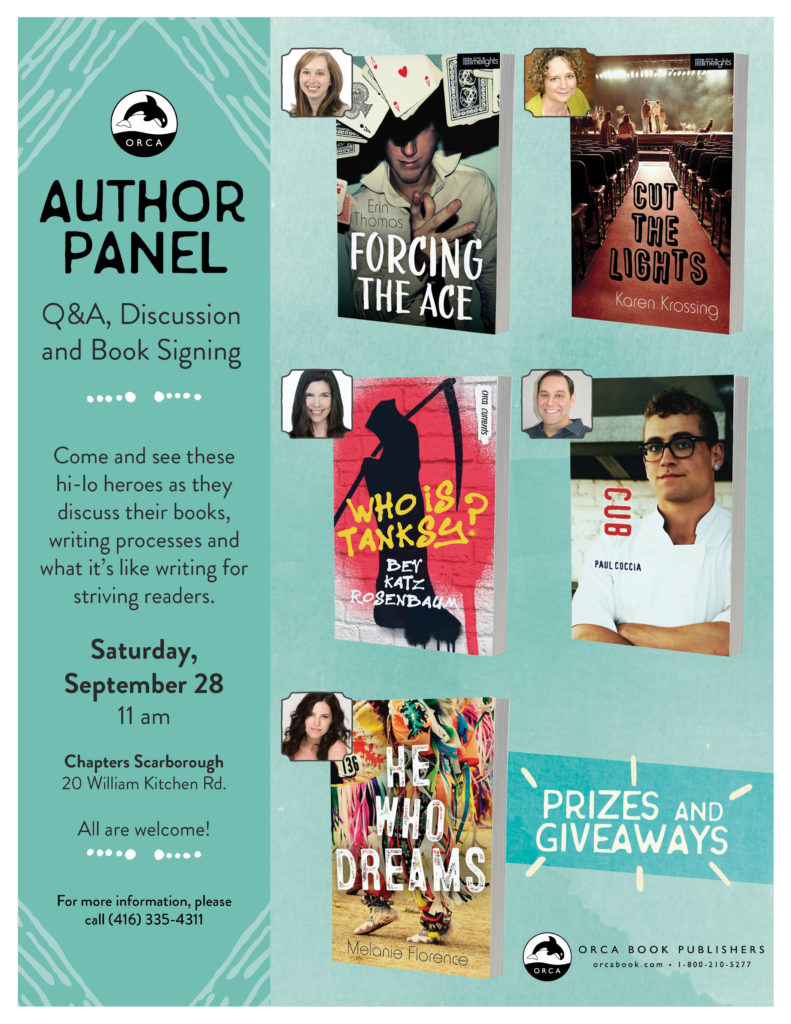This weekend, along with many of my fellow HiLo authors from Orca, H.I.P, Lorimer and other publishers, I’ve been trying to build some awareness online around books for reluctant readers and why we love to read and write these books.
What the Heck is a HiLo?
Whenever you write for kids, there’s a bit of a disjoint between the age of the character and the age of the reader. Readers tend to want characters to be a bit older than they are. This isn’t a hard-and-fast rule, just a guideline.
So basically the math on that is, if the book is written for a kid in grade 6 and written at their reading level, the character is in grade 7 or 8.
Now think about a kid whose reading level is lower than their grade level… say a sixth grader who reads at a third-grade level. Are you going to give that kid books that were written for third-graders, featuring younger characters and plot lines that aren’t a fit for the sixth-grader’s maturity level? That might not be the best way to hook this kid on reading.
These books (called HiLo, Hi-Low or Reluctant Reader titles) are written at a more accessible reading level, while still featuring age-appropriate plot and characters. In other words, a HiLo for that sixth-grade reader will feature characters in grade 7 or 8 and a plot that appeals to that age group, while controlling the reading level to the point where it’s easy, inviting and fun.
This is an oversimplification, of course. The math is never that clean, and a reader’s needs are not that cut-and-dry. But the point is, HiLo books help make relatable characters and exciting plots available to everyone.
Who Reads Them?
Short answer? Everyone. I am not, and never have been, a reluctant reader (much to the consternation of my parents, who didn’t understand why I needed to be reading a book as I walked to school). I love these books. Like picture books, they pack a big bang for their size.
These books are fun, fast reads for advanced readers. They’re also accessible reads for readers who are struggling for any number of reasons–learning difficulties might be at play (some HiLo books are being released with a dyslexia-friendly font, which is a wonderful development), English might be a second or third language, or the person just might not be a reader yet. (Someone online once proposed that these books be described as for “discerning readers,” rather than “reluctant readers.” There’s something to that. As a kid I would read pretty much anything between two covers. My brother, not so much.)
At risk of stepping in to iffy territory, I sometimes describe these books as a gateway drug for reading. The idea is to match the right book with the right reader, so they can have an enjoyable reading experience. And then, if you’re really lucky, they might come back to the parent or teacher or librarian who gave them that book, and ask for another one. And another one. Wouldn’t that be wonderful?
I’ve seen it happen.







